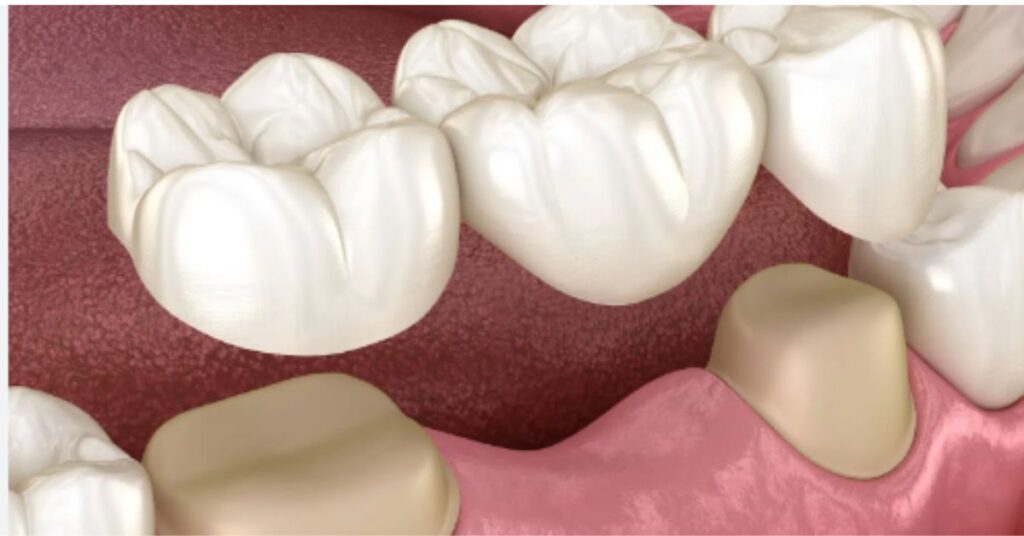
Introduction
Are you missing one or more teeth? If so, you’re not alone. According to the American College of Prosthodontists, a staggering 178 million Americans are missing at least one tooth, and 40 million have no natural teeth left at all. Missing teeth can significantly impact your oral health, function, and confidence. Fortunately, the Types of Dental Bridges offer a solution to restore your smile and prevent further dental issues.
Dental bridges are custom-made prosthetic devices that literally “bridge” the gap left by missing teeth. They not only improve your appearance but also help you chew and speak properly, maintain the shape of your face, and distribute the biting forces evenly across your remaining teeth. With the right type of dental bridge, you can enjoy a beautiful, functional, and long-lasting smile.
While dental bridges serve a common purpose, they come in various forms to accommodate different needs and situations. The four main types of dental bridges are:
- Traditional Dental Bridges
- Cantilever Dental Bridges
- Maryland Dental Bridges
- Implant-Supported Dental Bridges
Each type has its unique features, advantages, and disadvantages. Choosing the right dental bridge depends on factors such as the number and location of missing teeth, the condition of your remaining natural teeth, your budget, and your personal preferences.
Traditional Dental Bridges
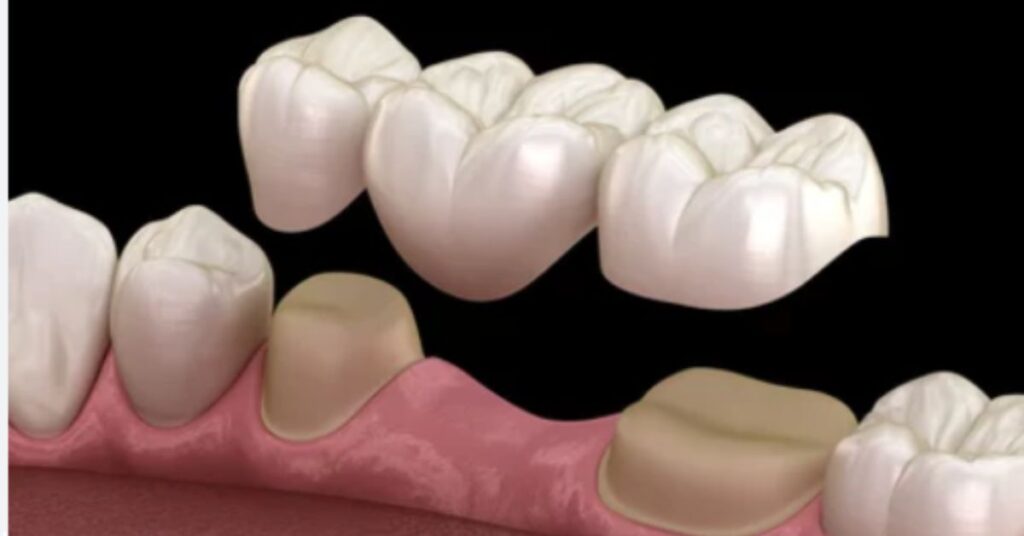
What are Traditional Dental Bridges?
Traditional dental bridges are the most common and widely used type of dental bridge. They consist of one or more artificial teeth (pontics) that are held in place by dental crowns cemented onto the abutment teeth (the natural teeth on either side of the gap).
Traditional bridges can be made from various materials, including metal alloys, porcelain, or a combination of metal and porcelain (known as porcelain-fused-to-metal or PFM bridges). They come in two varieties: rigid/fixed-fixed bridges and fixed-movable bridges.
How Traditional Dental Bridges Work
The process of getting a traditional dental bridge typically involves two or more visits to your dentist. During the first visit, your abutment teeth will be prepared by removing a small amount of enamel to create room for the crowns. Impressions (molds) of your teeth will be taken and sent to a dental laboratory, where your custom bridge will be fabricated.
Once your bridge is ready, you’ll return for the second visit, during which your dentist will carefully cement the bridge into place, ensuring a secure and comfortable fit. With proper care and maintenance, traditional dental bridges can last for many years, providing you with a durable and stable solution for missing teeth.
Advantages and Disadvantages of Traditional Dental Bridges
Traditional dental bridges offer several advantages:
- Natural appearance: With modern materials and techniques, traditional bridges can be designed to look and feel just like your natural teeth.
- Long-lasting: When properly cared for, traditional bridges can last for 10 years or more.
- Stable and secure: Once cemented in place, traditional bridges are highly stable and resistant to movement.
However, there are also some potential drawbacks to consider:
- Invasive procedure: Preparing the abutment teeth for crowns involves removing a significant amount of tooth structure, which is irreversible.
- Potential for tooth decay: The area around the crowns and bridge can be difficult to clean, increasing the risk of tooth decay or gum disease if not maintained properly.
- High cost: Traditional dental bridges are generally more expensive than other types of dental bridges due to the materials and labor involved.
Cantilever Dental Bridges
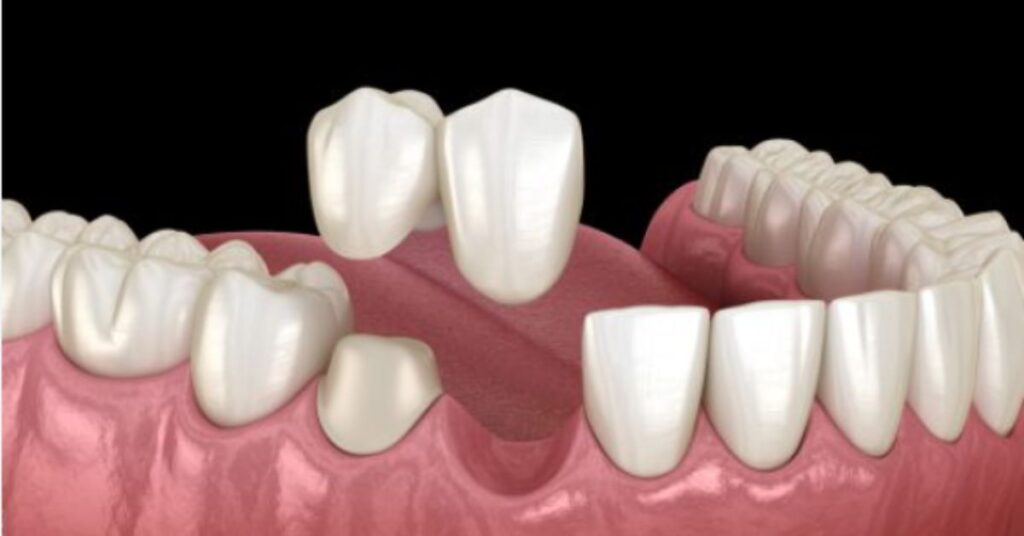
Understanding Cantilever Dental Bridges
Cantilever dental bridges are a unique type of bridge that is supported by only one abutment tooth. As the name suggests, the artificial tooth (or teeth) “cantilevers” over the gap, held in place by a single crown on the adjacent natural tooth.
This design makes cantilever bridges a practical solution for those who only have one natural tooth remaining on one side of the missing tooth space.
When to Choose a Cantilever Dental Bridge
Cantilever bridges are typically recommended when:
- You only have one natural tooth next to the gap left by a missing tooth.
- You have an adequate amount of bone support around the remaining natural tooth.
- The missing tooth space is located toward the back of your mouth (the biting forces are less intense in these areas).
While cantilever bridges offer a convenient solution in certain situations, they are generally not as stable or long-lasting as traditional bridges.
Pros and Cons of Cantilever Dental Bridges
Advantages of cantilever dental bridges:
- Fewer abutment teeth required: Only one natural tooth needs to be prepared for a crown.
- Lower cost: The overall cost is typically lower than traditional bridges since fewer teeth are involved.
Disadvantages of cantilever dental bridges:
- Less stable: The lack of support on one side makes cantilever bridges more prone to movement and dislodgement.
- Higher risk of fracture: The increased leverage on the abutment tooth can lead to a higher risk of fracture or damage over time.
- Limited lifespan: Cantilever bridges generally have a shorter lifespan compared to traditional bridges, often lasting only 5-7 years.
Maryland Dental Bridges
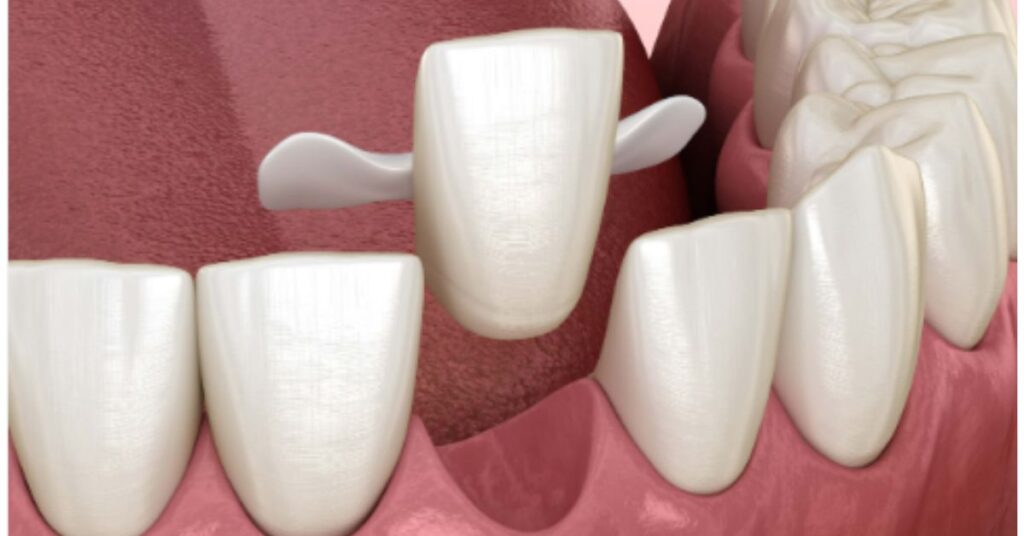
What are Maryland Dental Bridges?
Maryland dental bridges, also known as resin-bonded bridges, are a more conservative type of dental bridge that doesn’t require the preparation (filing down) of the abutment teeth. Instead, they feature a metal or porcelain framework that is bonded directly to the backs of the adjacent natural teeth using a dental adhesive.
This unique design makes Maryland bridges an excellent option for those who want to preserve as much of their natural tooth structure as possible.
Benefits of Maryland Dental Bridges
Maryland dental bridges offer several advantages over traditional bridges:
- Less invasive procedure: Since the abutment teeth don’t need to be prepared, the procedure is less invasive and requires less tooth structure removal.
- Quicker recovery: With no drilling or filing of teeth, the recovery time after getting a Maryland bridge is typically shorter.
- Natural appearance: When made from high-quality materials, Maryland bridges can look and feel just like your natural teeth.
- Durability: With proper care and maintenance, Maryland bridges can last for several years.
Limitations and Considerations
While Maryland bridges have their benefits, they also come with some limitations:
- Requirement for natural abutment teeth: You must have healthy, undamaged natural teeth on both sides of the gap to support the bridge.
- Potential for debonding: The adhesive bond between the framework and abutment teeth can weaken over time, leading to dislodgement or debonding.
- Limited lifespan: Maryland bridges typically have a shorter lifespan compared to traditional bridges, often lasting 5-10 years.
Implant-Supported Dental Bridges
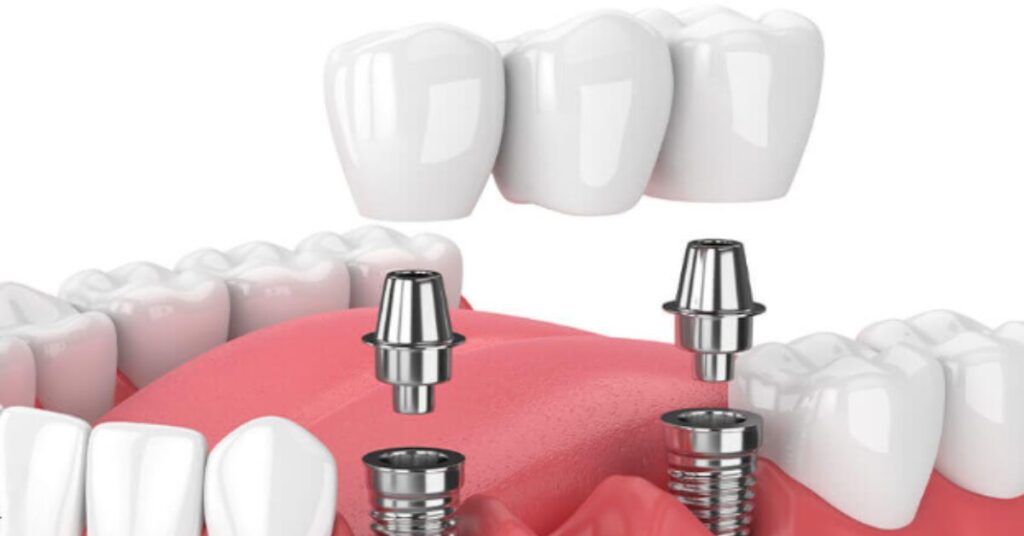
Understanding Implant-Supported Dental Bridges
Implant-supported bridges are type of dental bridges that relies on dental implants rather than natural teeth for support. Instead of being cemented to abutment teeth, the artificial teeth (pontics) are attached to one or more dental implants surgically placed in the jawbone.
This innovative solution provides a permanent and stable way to replace multiple missing teeth, especially in cases where there aren’t enough healthy natural teeth remaining to support a traditional bridge.
The Procedure for Implant-Supported Dental Bridges
Getting an implant-supported dental bridge is a multi-stage process that typically involves the following steps:
- Dental implant placement: During a surgical procedure, one or more titanium implants are inserted into your jawbone to serve as artificial tooth roots.
- Osseointegration: The implants are given time to fuse with the surrounding bone, a process that can take several months.
- Abutment placement: Once the implants have integrated with the bone, small connectors called abutments are attached to the implants.
- Bridge attachment: Finally, the custom-made dental bridge is securely attached to the abutments, completing the restoration.
While the process is more involved and time-consuming than other types of dental bridges, implant-supported bridges offer unparalleled stability and longevity.
Advantages and Disadvantages of Implant-Supported Dental Bridges (continued)
Advantages of implant-supported dental bridges:
- Permanent solution: Dental implants are designed to fuse with your jawbone, providing a long-lasting and stable foundation for your bridge.
- Improved stability: Implant-supported bridges are less likely to shift or become loose compared to traditional bridges, which rely on natural teeth for support.
- Natural appearance: With modern materials and techniques, implant-supported bridges can be designed to look, feel, and function just like your natural teeth.
- Bone preservation: Dental implants help stimulate and preserve the jawbone, preventing the bone loss that often occurs after tooth loss.
Disadvantages of implant-supported dental bridges:
- Invasive procedure: Placing dental implants involves surgical procedures, which can be more invasive and require a longer recovery period than other types of dental bridges.
- Longer treatment time: The entire process of getting an implant-supported bridge, from implant placement to final restoration, can take several months to complete.
- Higher cost: Implant-supported bridges are generally the most expensive types of dental bridges due to the cost of the implants, surgical procedures, and customized restoration.
- Potential risks: As with any surgical procedure, there are potential risks and complications associated with dental implant placement, such as infection, implant failure, or nerve damage.
Choosing the Right Dental Bridge
Factors to Consider
With so many types of dental bridges available, choosing the right one can be a daunting task. To help you make an informed decision, consider the following factors:
- Number of missing teeth: Traditional and implant-supported bridges are better suited for replacing multiple missing teeth, while cantilever and Maryland bridges are typically used for single tooth replacements.
- Condition of remaining natural teeth: If you have healthy, sturdy teeth on either side of the gap, traditional or Maryland bridges may be suitable options. If your remaining teeth are compromised or insufficient, implant-supported bridges may be a better choice.
- Desired level of invasiveness and complexity: Traditional bridges require the preparation of abutment teeth, while Maryland bridges are less invasive. Implant-supported bridges involve surgical procedures and a longer treatment time.
- Budget and cost considerations: Implant-supported bridges are typically the most expensive option, followed by traditional bridges. Cantilever and Maryland bridges are generally more affordable.
Consulting with a Dental Professional
While this guide provides an overview of the different types of dental bridges, it’s crucial to consult with a qualified dental professional to determine the most suitable option for your specific needs and circumstances.
During your consultation, your dentist will perform a thorough examination of your mouth, take X-rays, and discuss your medical history and lifestyle factors. Based on this assessment, they will recommend the type of dental bridge that offers the best balance of functionality, aesthetics, and long-term success.
Maintenance and Aftercare
Regardless of the types of dental bridges you choose, proper maintenance and aftercare are essential for ensuring its longevity and your overall oral health. Here are some tips to keep in mind:
- Practice good oral hygiene: Brush twice a day, floss regularly, and use an antimicrobial mouthwash to keep your bridge and surrounding teeth clean.
- Attend regular dental check-ups and cleanings: Professional cleanings and examinations can help detect and prevent potential issues early on.
- Avoid hard or sticky foods: Biting into hard objects or consuming sticky, chewy foods can dislodge or damage your dental bridge.
- Wear a night guard if recommended: If you grind your teeth at night, a custom-made night guard can protect your bridge from excessive wear and tear.
By following these guidelines and your dentist’s recommendations, you can help ensure that your dental bridge lasts many years and keeps your smile healthy and beautiful.
Conclusion
When considering the Types of Dental Bridges, it’s essential to seek professional advice from a qualified dentist. They can evaluate your individual needs and provide personalized recommendations to help you achieve a beautiful, functional, and long-lasting smile.
Don’t hesitate to schedule a consultation at Sri Sanjeevini Dental today. Our experienced team is here to guide you through the process and ensure you choose the perfect dental bridge for your smile. Your journey towards a healthier, more confident smile starts here!ident smile starts with taking that first step.
